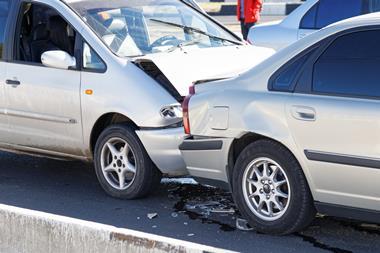But EY predicts a return to underwriting losses within two years
The UK motor insurance market has returned to underwriting profit, recording its best combined operating ratio (COR) since 1994, according to the EY Annual UK Motor Insurance Results.
The aggregate COR for 2017 was reported as 96.8% for 2017, a 12.6 percentage point improvement on the loss-making 109.4% COR reported in 2016.
EY said 2017’s strong result was driven by premium increases, a fall in injury claims, and a readjustment of reserves for large claims due to the improved outlook for the Ogden discount rate for personal injury claims.
Motor insurers generally took a cautious view in their 2016 results after the original announcement to change the Ogden rate in February last year, when it was reduced to -0.75%, but that reversed with the government’s progress towards reforming the way the rate is set via the Civil Liability Bill.
Some insurers have even been able to release some of these reserves from their balance sheets, and EY estimates without this effect the 2017 COR would have been about 1.6 percentage points higher.
Tony Sault, UK general insurance market lead at EY, said: “After the disappointing result in 2016, motor insurers have experienced a reversal in fortunes, buoyed by the anticipated changes to the Ogden rate.
“This helped create the best underwriting result since the mid-1990s. While the outlook for 2018 looks bright as the industry continues to benefit from the premium rises seen during 2017, the market is now softening rapidly and we expect this to impact 2019 profits.”
Premiums begin to fall once more
Last year, personal motor insurance cost consumers £480 on average, up 8.7% from £442 in 2016, reaching a peak of £491 in the fourth quarter of the year, according to ABI figures, with the main driver being the original Ogden rate change.
However, premiums began to fall in the early part of 2018 and are expected to remain on a downwards trend until early next year. The key reasons are increasing competition by insurers for market share, together with reductions in the level of whiplash claims from the anticipated effect of the whiplash reforms.
EY predicts premiums will fall to £471 over 2018 and £455 over 2019, with the benefit of the whiplash reforms equivalent to about £35 per policy.
A bright future lays ahead (or does it?)
Looking ahead, EY expects 2018 to be another good year for UK motor insurers, with the reported COR declining slightly to 97.7%, but maintaining profitability. Despite rates beginning to fall in the market, business written during 2017 will continue to perform well and further reserve releases are possible if the Civil Liability Bill receives Royal Assent.
In 2019, however, EY expects the current softening of premium rates to catch up with the changing claims environment, pushing the market back into loss-making territory.
While the whiplash reform element of the Civil Liability Bill should come into force next year, the government is likely to put pressure on the market to pass savings directly to consumers, resulting in little net benefit for insurers.
Reserve releases are also expected to return to normal levels, and EY predicts an underwriting result back in the red, with a COR of 102.5% in 2019.
Hosted by comedian and actor Tom Allen, 34 Gold, 23 Silver and 22 Bronze awards were handed out across an amazing 34 categories recognising brilliance and innovation right across the breadth of UK general insurance.













































No comments yet